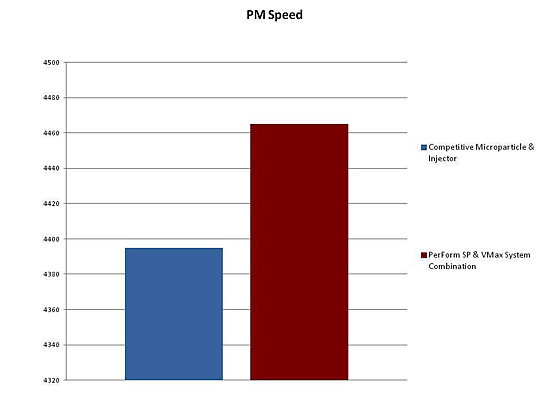Advanced Retention, Drainage Program Key to Increased Filler, Low Cost Fiber Use at P&W Paper Mills
 Print this article | Send to Colleague Print this article | Send to Colleague
By John Hochu, Ashland
Continual market pressures have most of today's printing and writing paper mills in pursuit of lower operating costs and improved paper quality. In many mills, increasing filler levels, using lower cost fibers (mechanical and recycled), and moving some production to new grades are ways to accomplish these goals.
However, these changes make it critical to have a low cost, advanced retention and drainage program that is flexible and robust enough to maintain control under varying conditions while maximizing productivity. Success lies in the combined use of a high performance, low cost retention polymer to maximize and control filler retention and a novel injection system to maximize the polymer program performance.
Two Innovative Solutions
Retention of fine particles, including fillers, in a papermaking furnish is key to maintaining machine runnability and cost competitiveness. Ashland's PerForm™ SP structured polymers behave as organic microparticles for neutral and alkaline papermaking systems. While this technology has a proven track record in packaging and tissue, it is also used with printing and writing grades where high filler retention is essential.
The unique polymer structure of PerForm SP enables high filler retention and drainage without compromising formation, and it maintains its performance under charge and conductivity swings. High ash retention delivered by these products can benefit mills by allowing higher sheet ash targets, improved wet end cleanliness, lower sewer losses, and improved additive efficiency. All of these allow mills to lower their operating costs.
A more recent innovation is Ashland's PerForm™ VMax advanced mixing and injection technology. This chemical delivery system is designed for post-diluting and injecting retention program polymers with very high levels of mixing, thereby promoting full dispersion of the polymers into the stock stream to maximize their efficiency. At the heart of the technology is a patented injection assembly that generates a highly turbulent mixing pattern, folding water and polymer together prior to stock addition while minimizing polymer shear.
Efficient dispersion of the polymer into the stock stream will maximize first pass and ash retention, allowing for a potential reduction in product usage and an increase in sheet formation. In addition, the design of the system allows use of reclaimed water from the paper machine, thereby eliminating the use of fresh water for post dilution and polymer injection. This can be a significant consideration for paper mills working toward reducing the cost of energy to reheat the freshwater. It also has strong, positive implications for mills that have water use and discharge challenges.
Replacing freshwater with mill process white water will help with an organization's sustainability efforts, reducing the environmental foot print and helping to promote a greener and environmentally-friendly site. The combination of highly efficient injection of the polymers, improved paper quality, and reduced heated fresh water usage will be a direct cost savings for the paper machine.
Double Success Stories
Two world-class freesheet paper machines in different regions of the world made the transition from a competitive, multi-component inorganic microparticle program and injection system to PerForm SP structured polymer and PerForm VMax mixing and injection system. In both cases, the customers were able to lower their operating costs using Ashland's program and achieve better performance from the retention programs.

Retention aid usage decreased dramatically versus the incumbent program in both applications. Both machines achieved production increases, higher sheet ash levels, reduced breaks, and lower retention program costs.
The combination of PerForm SP retention program and PerForm VMax Mixing and Injection system provides mills with an opportunity to lower their retention program costs, increase machine performance, and achieve environmental benefits. All of these equate to lower operating costs.
About the Author
John Hochu is applications project manager, Ashland, in Bartlett, Tenn., USA. He has been working 24 years with Ashland in the paper industry, including 17 years with retention and drainage programs.
|

